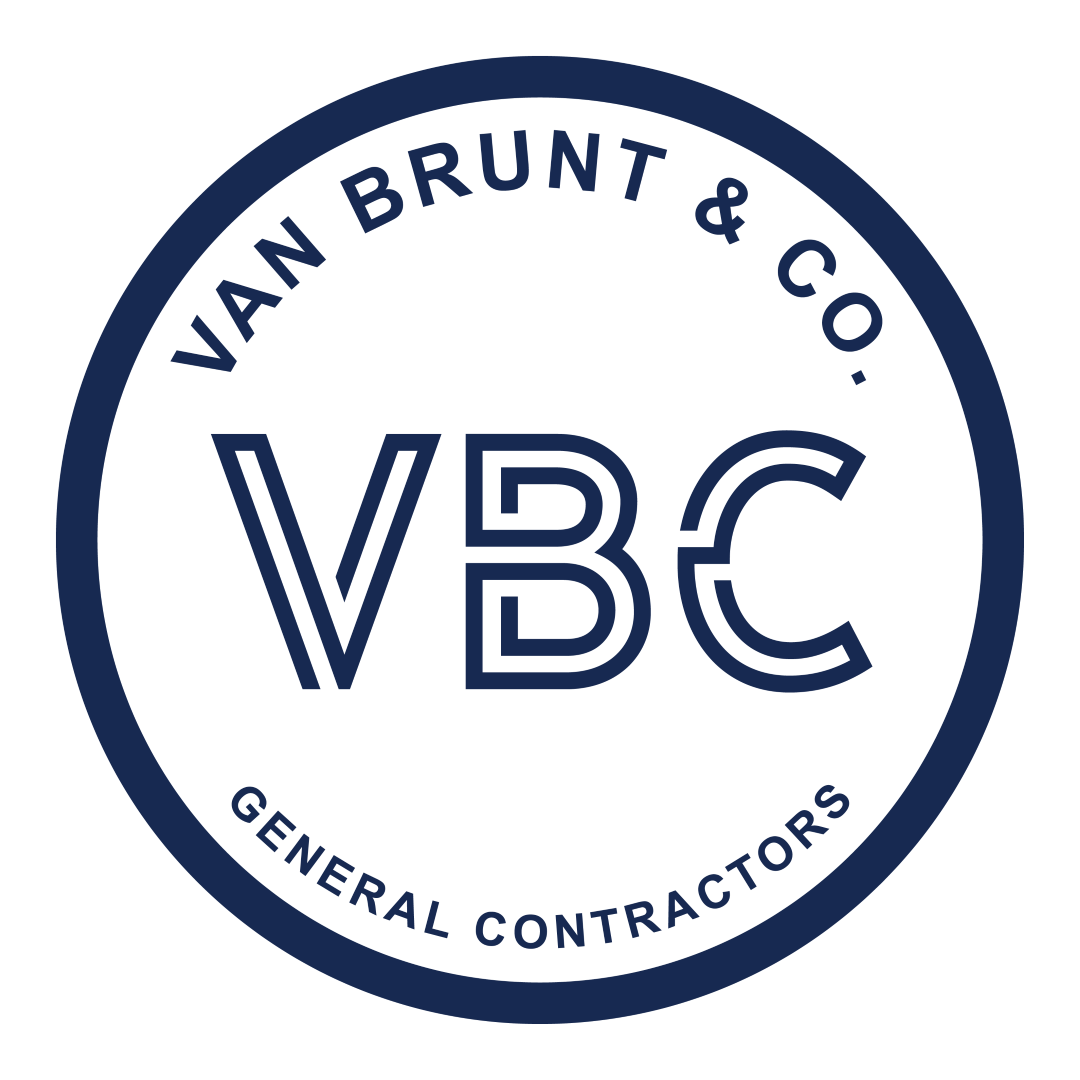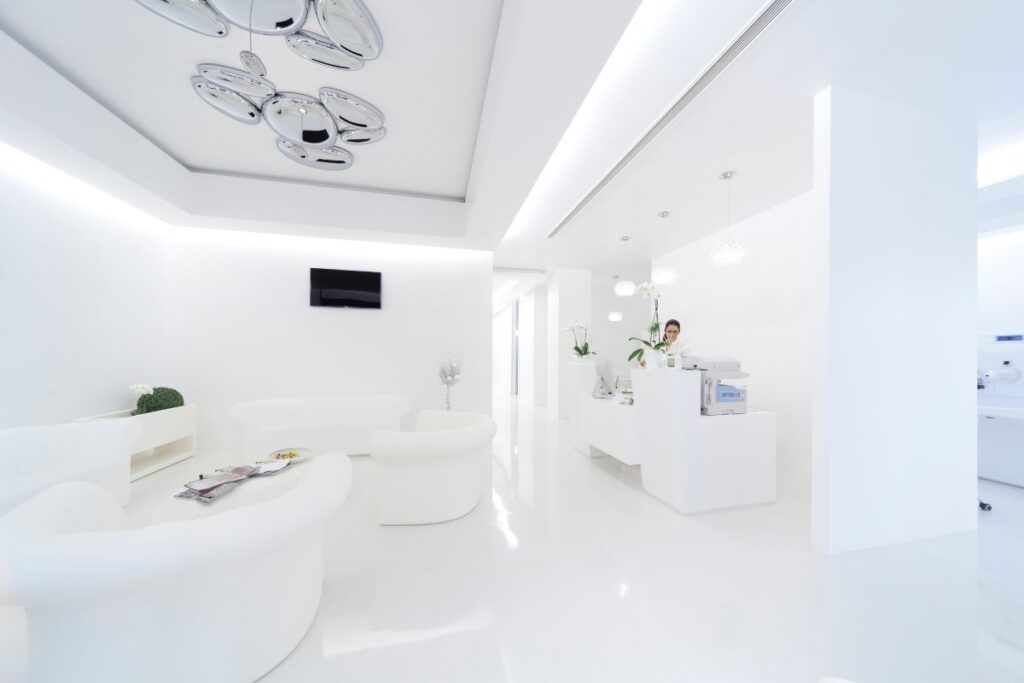Medical office construction is an exciting yet detailed process that blends healthcare needs with smart building strategies. It’s your chance to design a space that supports both patient comfort and staff efficiency. A well-planned medical office improves care and creates a more welcoming experience for everyone.
Still, building a medical facility comes with unique challenges. From strict rules to specific design standards, there’s a lot to manage. Every part of the space—exam rooms, waiting areas, and hallways—must meet medical codes and support day-to-day operations.
This guide covers the main steps you’ll need to follow. Learn how to plan, budget, design, and stay within legal requirements. Whether you’re upgrading an old space or building a new one, these tips help you move forward with confidence.
Experienced building contractors, like those at Van Brunt & Co, understand the ins and outs of medical office construction. They’ve spent years turning ideas into successful healthcare spaces that serve both patients and providers.
Details like natural light, clear signs, and easy layouts can make a big difference. Your space should feel comfortable, be efficient, and stay flexible for future needs.
With the right plan and team, medical office construction can lead to a space that’s safe, modern, and built for better care.

Top Challenges in Medical Office Construction (and How to Overcome Them)
Medical office construction involves more than just putting up walls and choosing furniture. It’s about building a space that works for patients, doctors, and staff—all while meeting strict codes and high expectations. Unlike typical commercial spaces, healthcare facilities have complex needs that demand careful planning and execution.
Understanding these challenges early can help you avoid delays, costly mistakes, and compliance issues. Here’s a breakdown of the most important things to know before starting your project.
1. Navigating Complex Regulations
Healthcare buildings are regulated by numerous state and federal rules. These aren’t optional—they’re critical to safety and function.
- Building Standards: Medical spaces must follow strict fire codes, structural rules, and ventilation requirements to ensure a safe environment.
- Infection Control: HVAC systems, building materials, and layout design must help prevent the spread of germs and support clean spaces.
- Accessibility (ADA): Your facility must be fully accessible to individuals with disabilities, from doorways to restrooms.
- Privacy (HIPAA): Patient information must be protected, which affects how private rooms, check-in areas, and IT systems are built.
Ignoring or misunderstanding these regulations can result in project delays or expensive rework. Early involvement from experienced medical office builders familiar with healthcare building codes is essential.
2. Designing for Specialized Healthcare Needs
The layout of a medical office directly affects how smoothly daily operations run. Unlike a regular office, these spaces must support both clinical and administrative tasks.
- Efficient Patient Flow: The layout should separate staff and patient areas to avoid confusion and maintain confidentiality.
- Room for Equipment: Imaging machines or surgical equipment require reinforced walls and radiation shielding.
- Flexible Spaces: Design rooms that can be easily adapted as technology and services evolve.
Creating a space that works now and in the future can save you money and prevent major renovations down the road.
3. Creating a Positive Patient Experience
The atmosphere in a medical office impacts how patients feel. A well-designed facility can reduce stress and improve satisfaction.
- Lighting and Ambience: Natural light, soothing colors, and good airflow make patients feel more at ease.
- Comfortable Waiting Areas: Include quality seating, calming music, and entertainment options to help patients relax.
Every detail, from the paint on the walls to the design of the check-in counter, contributes to the overall experience.
4. Planning for Smart Technology Integration
Modern medical offices rely heavily on technology for day-to-day operations. It’s important to plan for this infrastructure early.
- Future-Proof Wiring: Install wiring that can handle future technology upgrades without needing full rewiring.
- Seamless Integration: Equipment, software, and communication tools should work together without disrupting workflow.
A well-integrated tech system improves care, reduces errors, and boosts staff productivity.
5. Building for Safety and Long-Term Use
Durability and safety are non-negotiable in medical office construction. Your materials and layout should support long-term use.
- Hygienic Surfaces: Use materials that resist bacteria and hold up to frequent disinfecting.
- Emergency Readiness: Install proper exits, alarms, and waste disposal systems to protect everyone in the building.
These safety elements not only meet regulations but also protect your investment.
Medical office construction is a complex, detail-driven process that blends regulations, design, and patient care. With the right plan, team, and understanding of these unique challenges, you can create a space that’s efficient, safe, and welcoming. Building it right means building a place where better care happens every day.

Step-by-Step Guide to Medical Office Construction
Medical office construction is more than just building walls and installing equipment. It’s about designing a space where quality care happens every day. This process combines smart planning, legal compliance, thoughtful design, and solid budgeting. Whether you’re starting from scratch or renovating an existing building, each step matters.
In this guide, you’ll learn how to turn your healthcare vision into a functional, safe, and patient-centered facility.
Step 1: Plan Your Medical Office the Right Way
The first step in medical office construction is detailed planning. Before breaking ground, define your goals clearly. This sets the foundation for every decision that follows.
Define Your Project Goals and Needs
Start by understanding what your practice needs now and in the future.
- What medical services will you offer—family care, diagnostics, or specialty procedures?
- Who is your target patient group—seniors, children, or general population?
- How many patients do you plan to serve daily or weekly?
- Do you need exam rooms, imaging spaces, consultation offices, or procedure rooms?
- Will you expand services in the future? How can your space support that?
Take time to map out your operations and space requirements. Thinking through these factors now prevents costly changes later.
Evaluate Site Options with Feasibility in Mind
Once your needs are clear, it’s time to look at location options—a prime location is essential, as not every space works for a medical office.
- Is it accessible by public transport or highways?
- Does the site have ample parking and visibility?
- Is the property zoned for medical use?
- Will you build new or renovate an existing structure?
- Are there other practices nearby that serve the same population?
A site feasibility study is highly recommended. This includes soil testing, zoning checks, utility access, and cost projections. It helps identify hidden risks early—before construction begins.
Develop a Realistic Timeline and Budget
Time and money are your two biggest resources. Create a project schedule that covers all major phases:
- Planning and design
- Permitting and approvals
- Construction
- Equipment installation
- Final inspections and opening
Delays are common in construction. Always build in extra time. On the financial side, outline your cost breakdown:
- Hard costs – land, materials, labor
- Soft costs – architectural fees, engineering, permits, and legal costs
- Equipment – diagnostic tools, exam room gear, office furniture
- Contingency – a safety net for surprises
This early planning helps control your budget and avoid overspending later on.
Step 2: Understand Healthcare Regulations
Medical office construction must comply with local building codes—and specialized healthcare rules. These standards are in place to keep patients and staff safe and protected.
Zoning, Permits, and Building Codes
Start with local zoning. Not all locations allow for healthcare use. You’ll need to confirm that your site meets local zoning rules.
Next, secure the necessary permits:
- Building Permit – allows you to legally begin construction
- Zoning Variance – may be needed if your project doesn’t fully meet zoning requirements
- Fire Safety Permit – ensures fire systems meet safety codes
- Healthcare Facility License – required in some states to operate as a medical facility
Each area has different rules and timeframes for permit approval. Get familiar with the local process. Hiring an architect or contractor experienced in medical construction can save time and help avoid mistakes.
Follow HIPAA and ADA Requirements
Beyond permits, medical offices must follow healthcare-specific regulations.
HIPAA Compliance: This law protects patient privacy. It impacts how you design rooms, manage records, and set up digital systems.
- Install secure check-in desks
- Design private consultation areas
- Build secure server rooms or use encrypted networks
ADA Compliance: The Americans with Disabilities Act requires spaces to be accessible to all.
- Include ramps, wide doorways, accessible restrooms
- Ensure parking and entryways are ADA-friendly
Ignoring these rules can lead to fines or lawsuits. More importantly, they help create an inclusive and ethical practice.
Step 3: Design for Function and Flexibility
Great design is more than aesthetics. It’s about function, flow, and flexibility. A well-designed medical office improves operations and patient satisfaction.
Plan for Smooth Patient Flow
One of the biggest design mistakes is poor flow. Patients should move through the office without confusion or long wait times.
- Create clear paths from check-in to exam rooms
- Place waiting areas near the entrance
- Keep lab or imaging spaces near clinical zones
- Avoid crossover between patient and staff movement
Smooth flow reduces stress and increases efficiency.
Create Separate Zones for Staff and Patients
Staff need quiet, private zones to work efficiently. Patients need calm, respectful care environments.
- Set up staff-only entrances, lounges, and charting areas
- Use soundproofing to reduce noise between zones
- Limit patient access to secure areas
Zoning also improves privacy and complies with HIPAA standards.
Design with Flexibility in Mind
Technology and patient needs are always evolving. Your space should adapt easily.
- Use modular furniture and movable partitions
- Leave space in walls and ceilings for future wiring
- Make storage spaces adaptable for changing needs
A flexible design helps you avoid major renovations down the road.
Integrate Technology from the Start
Modern medical offices depend on digital tools. Plan for them early in the design phase.
- Install structured wiring for EHR systems and diagnostics
- Build space for server rooms or cloud systems
- Include outlets, data ports, and screen mounts where needed
Don’t forget telemedicine. Consider video-ready rooms with strong soundproofing and lighting.
Don’t Overlook Comfort and Accessibility
A calm, accessible space helps reduce patient anxiety.
- Use calming colors, natural light, and warm materials
- Offer comfortable seating and clear signage
- Keep restrooms clean, stocked, and easy to reach
A good experience helps build loyalty and trust.
Step 4: Budgeting Essentials — Build Within Reach
Even the best plans fall apart without smart budgeting. Medical office construction can get expensive fast—but proper cost control can keep things on track.
Understand Your Cost Breakdown
Be specific with your budget so you know where money is going.
- Hard Costs: Concrete, steel, roofing, HVAC, plumbing, electrical
- Soft Costs: Design, permits, insurance, engineering, legal fees
- Equipment Costs: Exam chairs, imaging equipment, office tools
- Furnishings: Reception furniture, storage units, cabinetry
- Technology: Computers, routers, EHR systems, telemedicine gear
- Contingency Fund: Reserve 10–15% for unplanned costs
Use past projects or contractor estimates to benchmark each line item.
Control Costs with Smart Planning
Save money by:
- Using multi-functional rooms
- Avoiding excessive finishes or luxury materials
- Choosing energy-efficient systems to reduce operating costs
- Buying furniture and equipment in bulk or through vendors
Regular check-ins with your contractor or project manager will help you catch issues early.
Medical office construction requires strategy, patience, and expert support. You’re not just building a space—you’re creating an environment for healing, trust, and long-term growth.
Start with clear goals. Choose a location that fits your needs. Design for patients and staff. Stay compliant. And always, always plan your budget carefully.
With the right approach, your dream facility can become a reality—built to support today’s needs and tomorrow’s care.
Conclusion
Medical office construction isn’t just another project—it’s a strategic investment in healthcare delivery. With the right planning, you can create a facility that enhances workflow, supports patient well-being, and meets every regulatory standard. Address each phase of building construction with precision: from zoning and budgeting to designing efficient, tech-ready spaces. Every step matters. Hire experienced professionals who understand healthcare environments and can guide you through complex codes and long-term planning. Don’t overlook flexibility—your needs will evolve, and your facility should keep pace. Whether you’re renovating or starting fresh, the goal remains the same: a safe, welcoming, and high-functioning medical office that drives better patient outcomes and operational success. Now is the time to act—build with purpose, build with expertise, and build for the future of care.
FAQs
How long does medical office construction usually take?
Timelines vary, but most projects take 6 to 18 months. Delays often come from permits, inspections, or weather conditions.
What are the key phases of building construction for medical offices?
They include planning, site selection, permitting, design, construction, equipment installation, and final inspections before opening.
Why are regulations stricter for medical offices than for commercial buildings?
Medical offices must meet health, safety, and privacy laws—like HIPAA, ADA, and infection control standards—to protect patients.
Can I renovate an existing building into a medical office?
Yes, but you must assess zoning, upgrade infrastructure, and ensure compliance with all healthcare-specific building codes.
How do I budget effectively for my medical office project?
Separate costs into categories: construction, design, permits, equipment, and a contingency fund. Plan for 10–15% extra for surprises.

